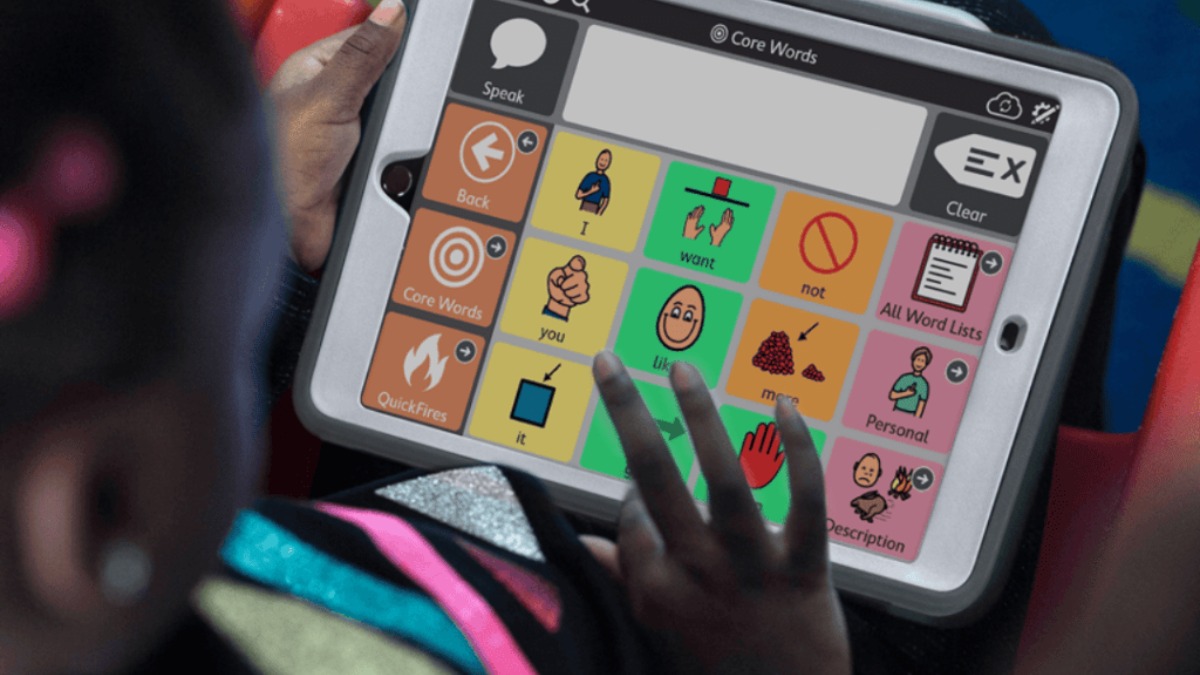DIR Floortime Scrutinized
November 17, 2024
Discover how DIR Floortime scrutinized reveals insights and benefits for parents and caregivers of children with autism.
.jpg)
Understanding DIRFloortime
The Fundamentals of DIRFloortime
DIRFloortime®, also known simply as Floortime, is an evidence-based approach designed to enhance human development, particularly in children on the autism spectrum. It promotes essential skills such as self-regulation, engagement, communication, social problem-solving, and creative thinking through respectful interactions and playful engagement.
The method emphasizes child-directed play, where caregivers follow the child's lead, facilitating learning and development in a nurturing environment. DIRFloortime can be integrated into daily routines, allowing children to benefit anytime and anywhere, whether at home, in a backyard, grocery store, or playground. This flexibility makes it a valuable tool for parents and caregivers, as therapeutic support does not always require professional involvement [1].
Benefits of Implementing DIRFloortime
Implementing DIRFloortime can lead to numerous benefits for children with developmental differences, especially those with autism. Here are some key advantages:
BenefitDescriptionImproved Communication SkillsChildren learn to express their needs and feelings more effectively.Strengthened Social InteractionsEnhanced engagement with peers and adults, leading to better social skills.Increased Self-RegulationChildren develop better control over their emotions and behavioral responses.Creative Problem-SolvingEncourages innovative thinking and adaptability in various situations.
This evidence-based approach has garnered strong research backing, with numerous studies indicating positive outcomes for children who engage in DIRFloortime. For more information on the effectiveness of this therapy, see our article on DIR Floortime therapy proves effective in recent studies.
By adopting DIRFloortime principles in everyday life, parents and caregivers can create a rich, developmentally supportive environment that caters to the unique needs of children on the autism spectrum. For strategies on progress tracking and evaluation, check out progress tracking and evaluation in DIR floortime.
Incorporating Floortime into Daily Life
Integrating DIR Floortime into daily life can significantly enhance the developmental experiences of children with autism. This therapeutic approach promotes engaging interactions and emotional growth in various everyday situations.
Everyday Applications of Floortime
Children with developmental differences, such as autism, can benefit from engaging in Floortime in any setting, including at home, in the backyard, at the supermarket, or at the playground. This flexible approach allows parents and caregivers to implement Floortime even without professional support. Research indicates that Floortime fosters emotional development, helping children to push themselves to reach their full potential by nurturing who they are rather than solely focusing on their diagnosis [1].
Implementing Floortime doesn't require extensive training; rather, it encourages spontaneous, playful interactions. Here are some practical applications:
SettingActivitiesHomePlaying with toys, reading books togetherBackyardEngaging in outdoor games or gardeningSupermarketAiding in shopping for favorite foods and engaging in conversations about choicesPlaygroundParticipating in play with peers or siblings, following the child's interests
Directing Interactions in Floortime
Floortime therapy sessions typically last between two to five hours and involve training for parents and caregivers as well as direct interaction with the child. These sessions prioritize back-and-forth play, which is essential for building shared attention, engagement, and problem-solving skills.
During Floortime interactions, parents and caregivers are encouraged to join the child in their activities and engage in progressively complex and meaningful exchanges, following the child's lead. This method helps in creating a calm and inviting environment, whether at home or in a therapy setting, which is conducive to learning and growth. For more about tracking progress and evaluating effectiveness, visit our article on progress tracking and evaluation in DIR floortime.
By incorporating these strategies into daily routines, parents and caregivers reinforce the principles of DIR Floortime, potentially leading to positive outcomes in emotional and developmental growth for their children with autism.
DIRFloortime versus ABA
Contrasting Approaches
DIRFloortime and Applied Behavior Analysis (ABA) are two distinct therapeutic approaches used to support individuals with autism. DIRFloortime emphasizes emotional and relational development, allowing children to reach their full potential by focusing on who they are, rather than solely on their diagnosis. This method targets various developmental areas such as speech, motor skills, and cognitive abilities, with a strong emphasis on emotional engagement and interaction.
In contrast, ABA centers on behavior modification techniques, focusing on observable behaviors and using reinforcement strategies to teach new skills. While ABA has been a widely recognized therapeutic approach for autism, it often lacks the emphasis on emotional growth that DIRFloortime provides.
The following table outlines some fundamental differences between the two methods:
FeatureDIRFloortimeABAFocusEmotional and relational developmentBehavioral modificationTechniquePlay-based interactionsReinforcement and behavior analysisEmphasisIndividual identity and potentialObservable behaviorGoalsHolistic developmentSkill acquisition and behavior changeParent InvolvementActive participationMay vary; parents often implement techniques
Combined Therapeutic Strategies
Many practitioners opt to use both DIRFloortime and ABA strategies in a combined therapeutic framework. This approach allows them to harness the strengths of both methods while addressing the unique needs of the child. For instance, implementing DIRFloortime principles during interaction can enhance emotional connections, provide a foundation for learning, and promote communication skills. These attributes can later be reinforced through ABA techniques to encourage the acquisition of specific behaviors and skills.
Research indicates that using DIRFloortime in conjunction with ABA therapies can result in significant improvements in the core challenges associated with autism. Studies have shown that developmental approaches like DIRFloortime support outcomes related to relating, interacting, and communicating effectively, while also improving parent-child relationships and reducing caregiver stress [3].
Parents and caregivers interested in integrating these approaches may benefit from exploring resources such as advocating for DIR floortime therapy and benefits of group DIR floortime therapy sessions for a more comprehensive understanding and application of both methodologies.
Milestones in Floortime
Key Milestones for Growth
DIR Floortime aims to support children with autism in reaching six essential milestones that foster emotional and intellectual development. These milestones are fundamental in enhancing a child's ability to interact and communicate effectively. The following table outlines these key milestones:
Milestone NumberDescription1Self-regulation and interest in the world2Intimacy and engagement with others3Two-way communication4Complex communication and problem-solving5Emotional thinking and use of symbols6Logical thinking and reasoning
Through structured interactions, therapists instruct parents on how to encourage their children to navigate these milestones using techniques that promote "opening and closing circles of communication" [2]. This method allows children to express themselves, listen, and respond, facilitating deeper social engagement.
The progress made through Floortime is not only attributed to direct interventions but also to the emotional bond developed between the child and caregiver during these interactions. For more insight into how to track progress, refer to our article on progress tracking and evaluation in DIR floortime.
The Role of Therapists and Parents
The collaboration between therapists and parents is crucial for the success of DIR Floortime. Research indicates that the more involved parents are during Floortime, the better the child’s outcome regarding various developmental aspects. Therapists guide parents on how to engage with their children, offering strategies that empower them to create meaningful interactions.
Parents play an active role in promoting the aforementioned six milestones, utilizing techniques that therapists provide. Significant factors influencing Floortime effectiveness include parental engagement, knowledge of DIR, and overall family dynamics. For instance, aspects such as parental marital status, earnings, and prior exposure to DIR can impact the success of the therapy [4].
Online training resources, including online courses and certifications for floortime therapy, are available to assist parents in becoming more adept at this approach. The partnership between caregivers and professionals is vital in nurturing a supportive environment conducive to achieving each developmental milestone.
Research Support for Floortime
Research plays a pivotal role in understanding the effectiveness of DIR Floortime. Various studies and reviews have emerged, showcasing its benefits in supporting individuals with autism.
Evidence-based Approach
DIR Floortime has garnered attention for its robust research backing. According to the ICDL, it stands out as one of the most researched interventions aimed at improving core challenges related to autism. These challenges include relating, interacting, and communicating. Studies have demonstrated not only improvements in child development but also enhancements in parent-child relationships and a reduction in caregiver stress.
The approach is supported by a combination of methodological designs, including:
Study TypeDescriptionCase StudiesIn-depth examinations of individual experiences with DIR Floortime, showcasing significant improvements in communication and emotional connections.Group Design StudiesResearch that compares outcomes of different groups using DIR Floortime versus traditional methods.Randomized Controlled TrialsRigorous experimental designs that provide strong evidence of effectiveness through statistical significance.Systematic ReviewsComprehensive analyses consolidating findings from multiple studies to assess overall effectiveness.
Multiple randomized-controlled studies have identified statistically significant improvements for children with autism using Floortime compared to traditional behavioral approaches [3]. This evidence underscores the approach's effectiveness in reducing parental stress and enhancing child development.
Studies and Clinical Trials
Several significant studies have provided insight into the positive impacts of DIR Floortime:
Moreover, DIR Floortime has been characterized as cost-effective and child-led, promoting early initiation for better social and emotional growth. The research highlights the efficacy and adaptability of the DIR Floortime approach, making it a viable option for many families.
Parents and caregivers seeking further information on the progress tracking and evaluation in DIR Floortime can explore our article on progress tracking and evaluation in DIR floortime. Additionally, those interested in the broader implications of DIR Floortime can read about DIR floortime therapy proves effective in recent studies.
Effectiveness of Floortime Sessions
Evaluating the effectiveness of DIRFloortime involves examining both the duration and format of sessions, as well as their overall impact on child development.
Duration and Format of Sessions
Floortime therapy sessions typically range from two to five hours a day. These sessions not only involve direct play and interaction with the child but also include training for parents and caregivers [2]. The emphasis in these sessions is on back-and-forth play, which is essential for building shared attention, engagement, and problem-solving skills.
Duration of SessionsFocus2 HoursBasic engagement and interaction3 HoursEnhanced focus on emotional connections4-5 HoursComprehensive skill development and parent training
Cost considerations also play a role in the accessibility of DIRFloortime. The average cost associated with a weekly intervention is approximately $5,000 per child per year, which is notably less than traditional therapy programs that often provide 20–30 weekly hours of treatment [3].
Impact on Child Development
Research has shown substantial progress in various levels of functioning among autistic children who undergo Floortime therapy. Home-based Floortime has been linked to improvements in emotive functioning, communication skills, and daily living skills. Parent-child interactions have also been reported to improve, as expressed by mothers involved in the sessions.
Engagement from parents during Floortime sessions has proven critical; the more involved the parent, the greater the observed improvements in the child’s functioning. Factors such as the severity of autism spectrum disorder (ASD), duration of treatment, and the parents' demographic variables—including marital status and earnings—significantly influenced the outcomes of therapy [4].
Overall, Floortime has demonstrated effectiveness in enhancing social interaction and communication skills in children. It is a cost-effective, child-led approach that can be initiated early in a child's development to support their social and emotional growth [4]. For more detailed information about progress tracking in Floortime, consider exploring progress tracking and evaluation in DIR floortime.
Wondirful Play specializes in DIR Floortime therapy in New Jersey, offering personalized sessions that meet each child where they are and encourage them to flourish in their unique way. Our experienced therapists offer personalized DIR Floortime services tailored to your child's unique needs, helping them grow emotionally, socially, and cognitively. Contact us today to learn more!
References
[2]:
[3]:
[4]:
Recent articles


.jpg)



.jpg)






.jpg)











.jpg)
.jpg)

.jpg)
.jpg)
.jpg)



.jpg)
.jpg)
.jpg)

.jpg)
.jpg)

.jpg)



.jpg)


.jpg)
%20(1).jpg)

.jpg)






.jpeg)









.jpg)
.jpg)
.jpg)
.jpg)
.jpg)


.jpg)
.jpg)
.jpg)
.jpg)
.jpg)
.jpg)
.jpg)
.jpg)
.jpg)
.jpg)
.jpg)
.jpg)
.jpg)
.jpg)
.jpg)
.jpg)
.jpg)
.jpg)
.jpg)
.jpg)
.jpg)
.jpg)
.jpg)

.jpg)
.jpg)
.jpg)
.jpg)
